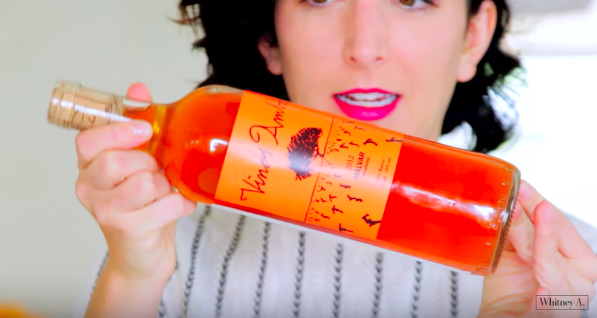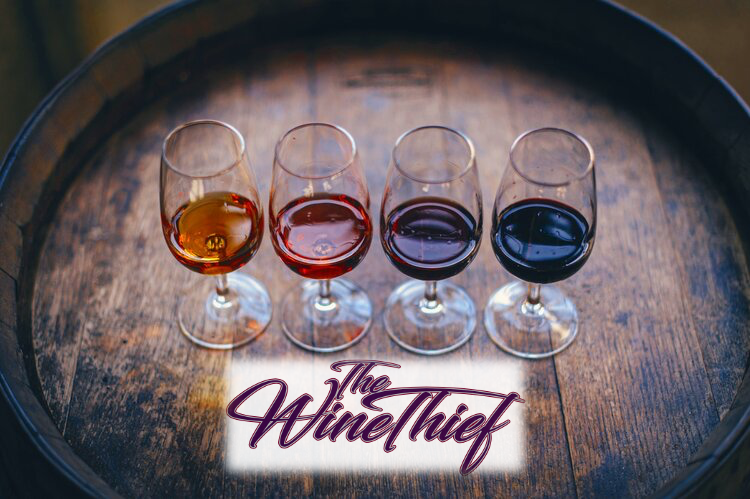Posted: Jun 26, 2017
 Source: Whitney Adams | You Tube
Source: Whitney Adams | You TubeWe pride ourselves in this country on our openness to new influences, but when it comes to orange wine, Canada has the edge. I’ve just spent a few days in Montreal, where practically every restaurant (OK, not Tim Hortons) lists orange wines; one place I went to, Nora Gray, had 10. The quality-control board in Ontario has even drawn up regulations for skin contact wines – wines where the grapes are left in contact with the skins; it’s the first in the world to create such a code.
So what is orange wine, or amber wine, as it’s sometimes called? Well, it’s not wine made from oranges, but rather it’s a white wine made like a red by fermenting the juice on the skins. This gives it a more full-bodied, tannic character, and the depth of colour, which ranges from pale gold to deep bronze, depends on how long the contact is for; sometimes days, sometimes months. Normally, the practice goes hand in hand with natural winemaking (natural yeasts and low sulphites), which can make the outcome challenging if you’re used to more conventional wines. (Like red wines, you may need to decant them, too.) But, served at cool room temperature, as they should be, orange wines have a depth of flavour that many whites lack.
Orange Wine | Whitney A.
Orange wine is very common in Georgia, often found in eastern Italy, Slovenia and Croatia, and now made by winemakers as far apart as South Africa and Spain. It works best, in my view, with aromatic grape varieties such as pinot gris and muscat. Try Rafa Bernabe’s headily perfumed Benimaquia Tinajas 2015 (£15.85 Les Caves de Pyrène, £17 thewinescouts.co.uk; 11.5% abv), made from organic moscatel vines in the sandy, coastal soils near Alicante, which smells of orange blossom and tastes of tangerines. Or the equally seductive Slobodne Oranzista 2015 (£26.95 Vagabond Wines; 12% abv), a newly arrived pinot gris from Slovakia with a similarly sexy tangerine and quince character. Both are ideal to sip outside on a warm summer night.
The catch, as you can see, is that these wines tend to be on the pricey side, due to the combination of tiny producers, limited production and – with the honourable exception of Marks & Spencer’s delicious Tbilvino Qvevris 2015 (£10; 12% abv), from Georgia, which is fermented in traditional clay pots – unavailable in supermarkets. Your best bet to try some out is to head for a natural wine bar such as Terroirs, The Remedy and Primeur in London, Bar Buvette in Bristol or Plateau in Brighton; or to one of my colleague Yotam Ottolenghi’s restaurants, whose food goes exceptionally well with them. Or, of course, to Canada.
By Fiona Beckett
June 22,2017
Source: The Guardian.Com
Go-Wine's mission is to organize food and beverage information and make it universally accessible and beneficial. These are the benefits of sharing your article in Go-Wine.com
 Source: Whitney Adams | You Tube
Source: Whitney Adams | You Tube
The Wine Thief Bistro & Specialty Wines is a locally owned small business in downtown Frankfort, IL offering world class wines in a relaxed, casual gathering spot for friends and family. Offering world class virtual tastings and touchless carryout.
https://www.twtwineclub.com/aboutus
Go-Wine 25 Great Wineries in US selection prioritizes quality, value and availability.
www.go-wine.com/great-wineries-in-america
Tasting wine is a nice experience, but visiting the places in which wine is made is a magic moment. Available in New York City for touchless pickup.